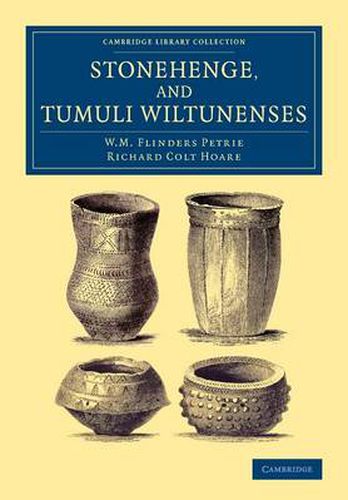Readings Newsletter
Become a Readings Member to make your shopping experience even easier.
Sign in or sign up for free!
You’re not far away from qualifying for FREE standard shipping within Australia
You’ve qualified for FREE standard shipping within Australia
The cart is loading…






Begun in 1874 and published in 1880, a detailed survey of the stones of Stonehenge was one of the earliest works of William Matthew Flinders Petrie (1853-1942), the energetic archaeologist who is remembered as a pioneering Egyptologist. It is reissued here alongside Sir Richard Colt Hoare’s 1829 analysis of the barrows surrounding Stonehenge, thus giving modern readers a valuable two-part snapshot of nineteenth-century investigations into this famous site. Hoare (1758-1838), a Wiltshire baronet with a keen interest in archaeology and topography, conducted excavations on the site of the stones in the early 1800s, which were later referred to by Petrie, whose measurements were much more accurate (up to one tenth of an inch). Petrie’s numbering system for the stones, as set out in this publication, is still in use today. Many of his groundbreaking works in Egyptology are also reissued in the Cambridge Library Collection.
$9.00 standard shipping within Australia
FREE standard shipping within Australia for orders over $100.00
Express & International shipping calculated at checkout
Begun in 1874 and published in 1880, a detailed survey of the stones of Stonehenge was one of the earliest works of William Matthew Flinders Petrie (1853-1942), the energetic archaeologist who is remembered as a pioneering Egyptologist. It is reissued here alongside Sir Richard Colt Hoare’s 1829 analysis of the barrows surrounding Stonehenge, thus giving modern readers a valuable two-part snapshot of nineteenth-century investigations into this famous site. Hoare (1758-1838), a Wiltshire baronet with a keen interest in archaeology and topography, conducted excavations on the site of the stones in the early 1800s, which were later referred to by Petrie, whose measurements were much more accurate (up to one tenth of an inch). Petrie’s numbering system for the stones, as set out in this publication, is still in use today. Many of his groundbreaking works in Egyptology are also reissued in the Cambridge Library Collection.